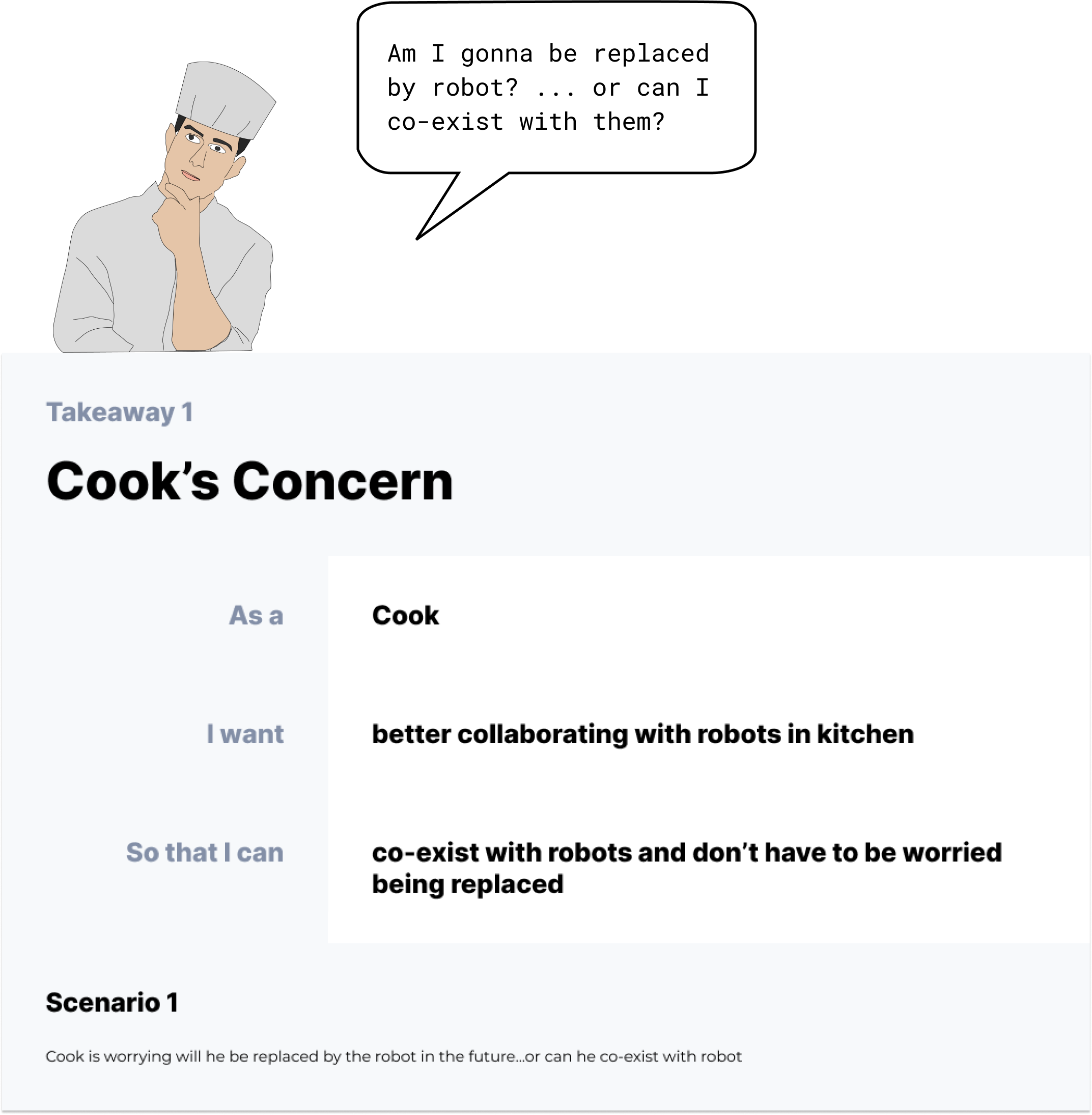I, Kitchen
Project Brief
I, Kitchen is a b2b collaborated app-based product for Fresh To Order that could benefit chef, cook, and manager in the future robotic kitchen to help them better co-existing with robot
Timeline
3 months
My Role
Individual Student project
Challenge
Solution Storyboard
As the trend of more and more robotic kitchens get involved with the restaurant industries during economic recession, problems relate to hospitality and budget balancing emerge.
Overall Design Process
01
Trend Hunting
02
Research
03
Ideation
04
User Testing

Trends Hunting
Trends Hunting
Trends Hunting
Trends Intersection
How might we able to create a cook-robot collaborated system that could benefit different roles in restaurant and meet their needs?

Research
Research
Market Competitive Analysis - What do robots do in current robotic restaurant
Mostly heating and Assembling
high-tech oven and robotic machines that heat up prepared ingredients and mix them together in a variety of combinations.
proprietary robot that happens behind the scenes to hydrate and heat the frozen bowls
Fast-food preparation is made for robotics. “The recipes are highly standardized. Which is mostly heating an assembly
Mezli
Yo-Kai
Fast food
Secondary Research -- Considering Both Current Available Technology and cooking steps
What else can robot do in Fresh to Order?
Since I would like to design the system for Atlanta local restaurant Fresh To Go, I did some research on its menu and dive into their three main categories( sandwich, plates, salad). Based on the cooking steps of their dishes and current available technology , I categorized the steps that could done by either robot or human being, which are listed below.
Analyzed the menu of Fresh to Order and categorized the cooking steps of dishes within 3 sections.
The conclusion of cooking steps that could be done by either robot or human being.
Stakeholder Map - Who are involved in the restaurant business?
Chef, Cook, and Manager
Before getting into the real users, I would like to know about who the real users are. Based on the stakeholder maps, I decided to focus on the main stakeholders in the restaurant, which are chef, cook, and manager. Chef is considered as the main dish designer, and teach cook how to cook the food. Cook is considered as the role that cook most of food in daily open time. Manager considered as the role that manage all business around the restaurant
User Interview
After I figure out what type of robot will be used in the kitchen as well as who will be involved in the restaurant business, I’ve conducted 3 user interview with the stakeholders, including 2 cooks and 1 managers, to see what’s their real perspective about their current robotic kitchen, and what is going on when they are working at restaurants.
Interview questions includes:
What do you think of Robotic Kitchen?
What do you think you can benefit from robotic kitchen?
How is the restaurant during recession/pandemic?
What else do you concern in your current restaurant?
User Story - Key Takeaways
Main Design Goals

Ideation
Ideation
Using iPad frame as the carrier
Using Ipad frame as the carrier of the whole system, because customer generally order food with IPad, using the same kind of frame will keep the product’s adaptability
Lo-fi Prototype
After that, I did some sketches the lo-fi prototype based on design goals
To B user flow

Prototype
Prototype
Chef uploads the cooking Step
Cooks used per-uploaded steps to cook
Manager checks the inventory and robot usage for future purchasing plan
Reflection
What I’ve learned...
As a prospective designer, it’s very crucial to get to know some trends of the real world, those trends could be the future design opportunities, on the other hand, get to know trends could help us explore more solutions or questions for our current problems.
Another thing I have learned in this semester is when we do b2b project, the target users are no longer one type of user, for you have to solve the problems for multiple stakeholders or entire ecosystem. I think b2b project requires diverse ability from designer.
If I have more time…
I will conducted user testing to iterate the system.
I will keep working on the user flow and information architecture to increase the usability and accessibility of the whole product.
I will focus on more practical problems, such as what if one robot have multiple task to do at the same time

























